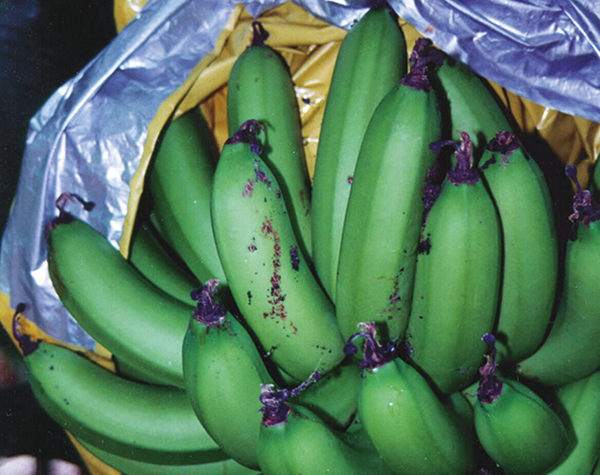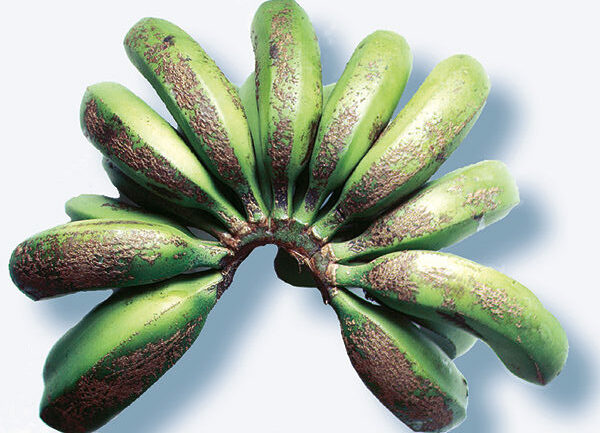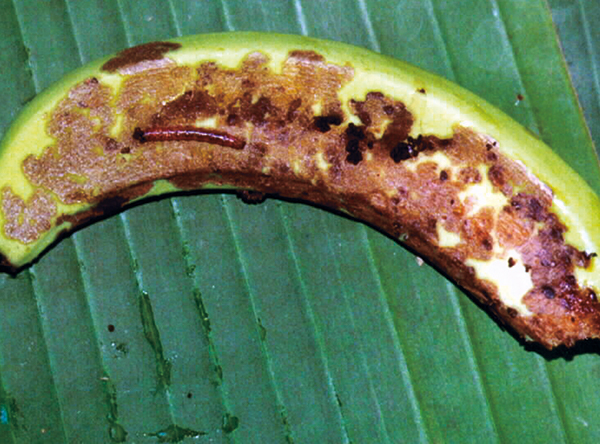Scabs on fruit
Banana fruit caterpillar
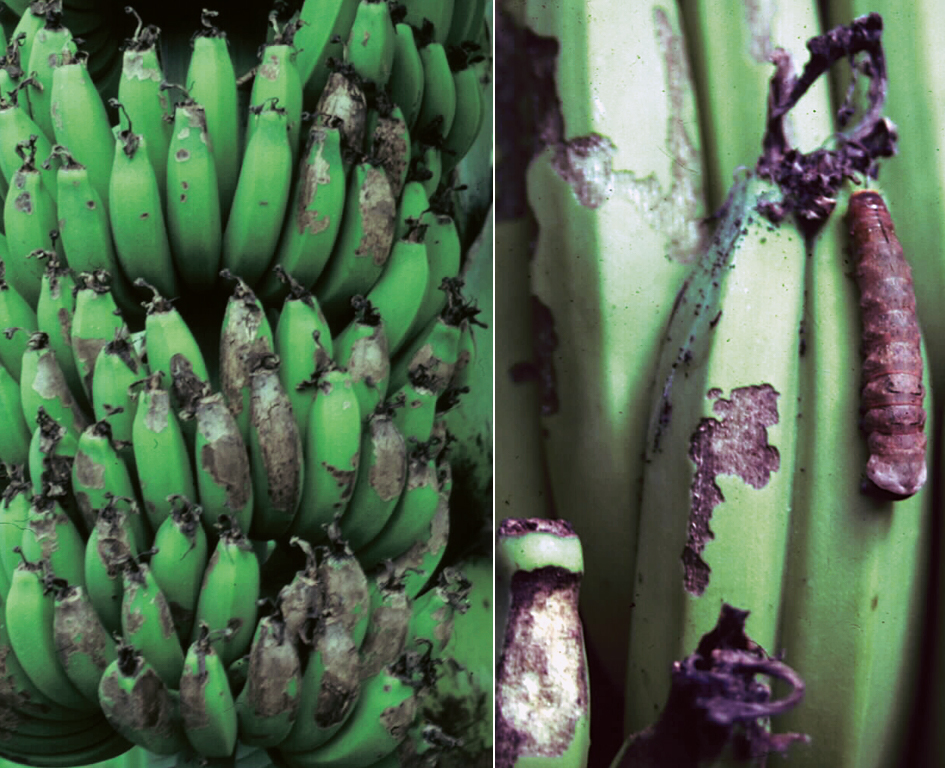
Cause: Larvae of Tiracola plagiata feeding on leaves and fruit. Damage is usually confined to a few bunches and feeding on fruit is confined to the outside of fingers.
Solution: Although attack to a single bunch can be very severe, only a few bunches are damaged and specific treatments are not usually needed. Standard treatments for rust thrips and sugarcane bud moth help to control fruit caterpillar. If damage is noted on more than 5% of bunches, treat with a pesticide.
Corky scab
Cause: Scarring from feeding and egg-laying by flower thrips, Thrips hawaiiensis on young fruit when still covered by the bracts.
Solution: Insecticide injection at bell emergence for control of scab moth also controls flower thrips.
More info:
Banana flower thrips – Summary
Rub
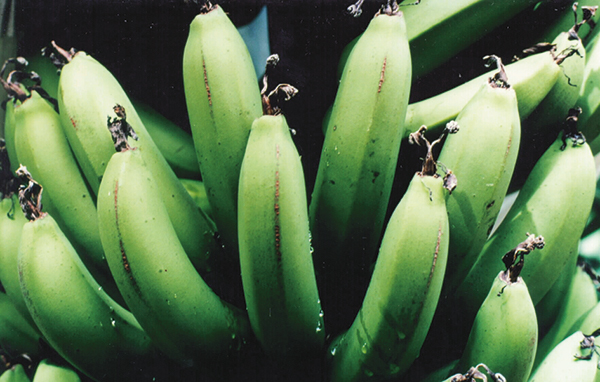
Cause: Rubbing between the bag and young fingers due to prolonged strong winds. Leaves rubbing against the fruit cause similar symptoms.
Solution: Retaining existing vegetation or planting specific windbreak trees can reduce the damage caused by strong winds.
Scab moth
Cause: Larvae of Nacoleia octasema feeding on the fruit between the bunch stalk and the hand. Only occurs from bunch emergence to bract fall.
Solution: Newly emerged bells require pesticide injection while they are still upright. When the plants are growing quickly during summer, treat blocks at least weekly.
More info:
Banana scab moth – summary
Sugarcane bud moth
